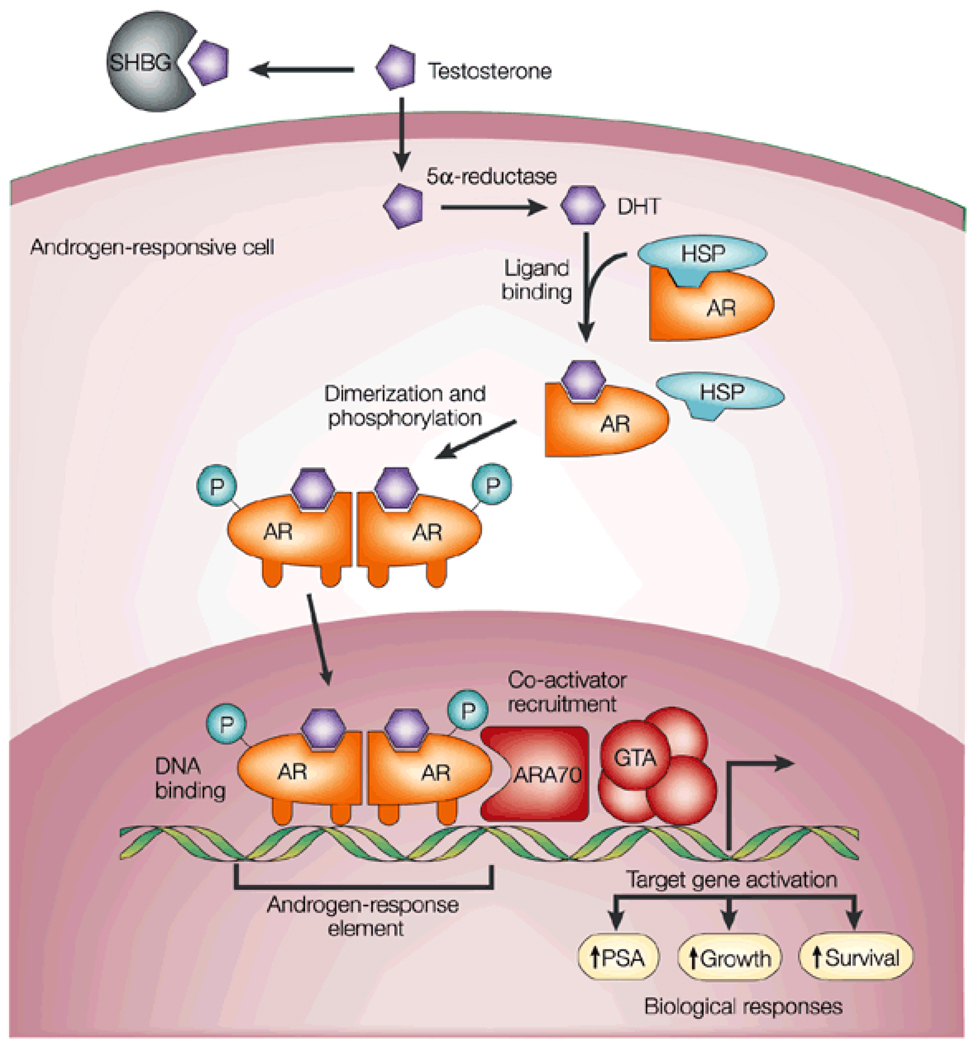Figure 1. Androgen action.
Testosterone circulates in the blood bound to albumin (not shown) and SHBG, and exchanges with free testosterone. Free testosterone enters prostate cells and is converted to DHT by the enzyme 5[alpha]-reductase. Binding of DHT to the AR induces dissociation from HSPs and receptor phosphorylation. The AR dimerizes and can bind to androgen-response elements in the promoter regions of target genes. Coactivators (such as ARA70) and corepressors (not shown) also bind the AR complex, facilitating or preventing, respectively, its interaction with the GTA. Activation (or repression) of target genes leads to biological responses including growth, survival and the production of PSA. Potential transcription-independent actions of androgens are not shown. Reproduced, with permission, from Feldman BJ and Feldman D (2001) Nat Rev Cancer 1: 34–45 © Macmillan Publishers Ltd. All rights reserved. Abbreviations: AR, androgen receptor; ARA70, androgen receptor associated protein 70; DHT, dihydrotestosterone; GTA, general transcription activation; HSP, heat-shock protein; SHBG, sex-hormone-binding globulin.

